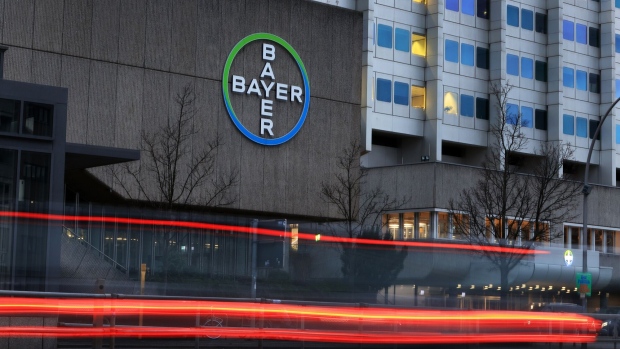Jan 18, 2024
Bayer Moves Away From Breakup Despite Investor Pressure
, Bloomberg News

(Bloomberg) -- Bayer AG is leaning against breaking up the conglomerate, rejecting pleas from investors frustrated by the company’s ongoing struggle to recover from its costly purchase of Monsanto, according to people familiar with the matter.
Chief Executive Officer Bill Anderson and other Bayer leaders are skeptical that this year is the right time to make a major change to the business model, said the people, who discussed the private information on condition of anonymity.
Ahead of a strategy briefing scheduled for March 5, the company has been studying options for months that included a potential separation of its consumer-health or crops-science divisions. For now, Bayer executives would rather focus on implementing a new operational model, announced late Wednesday, and push a possible structural change to a later date, the people said.
Shares dropped as much as 3.5% on the news, bringing the loss this year to about 4.6%. A spokesman for Bayer declined to comment.
Investors have been waiting months for Anderson to lay out his plans for the company and are likely to grill him at the company’s upcoming capital markets day. Bayer’s three-legged business model — which also includes a pharma division — has drawn the ire of several investors for years, who complain that the divisions don’t belong together and there would be more value created by splitting them up.
Read more: Bayer’s New CEO to Cut Management Jobs in Bid for Turnaround
But an avalanche of US litigation over former Monsanto products, especially the weedkiller Roundup, make a breakup difficult. Tens of thousands of plaintiffs are still suing Bayer over the product, saying it caused their cancer. Bayer insists the product is safe. Bayer has pledged to spend as much as $16 billion to put the Roundup suits behind it, but it’s still failed to put a lid on the situation. Meanwhile, slumping commodity prices and poor operational performance have put additional pressure on the crops division.
Several investors have also called for Bayer to split off its consumer-health division, in line with a broader industry trend. Such a move could help Bayer pay down its high levels of debt and invest in new drugs for its struggling pharma unit, but the option has also raised concerns that it would generate a high tax bill. Some investors have also voiced concerns that it could embolden plaintiff attorneys in the US to ratchet up legal fights with Bayer if it appears that there’s more money to be had.
Markus Manns, portfolio manager at Union Investment, a top 20 shareholder in Bayer, said he expects a critical review of the group structure and measures to limit legal risks, reduce debt, increase cash flow and improve the pharmaceutical pipeline.
“This will not all happen in one fell swoop, but the direction and speed should be right,” he said.
Bayer’s announcement Wednesday evening, which included plans to slash jobs in its managerial ranks, was a major step for Anderson, who’s managed to convince his workforce that vastly reducing the internal bureaucracy is necessary to resurrect the fortunes of what was once Germany’s most valuable company. Since taking over Monsanto in 2018, shares are down about 70%.
Read more: Bayer Sees No Quick Fixes After Bankers Game Out Breakup
Notably, Heike Hausfeld, a Bayer worker and deputy chair of the supervisory board, said in the statement that she’s agreed with a “heavy heart” to the job cuts but is “vigorously campaigning” to keep the conglomerate structure in place.
Anderson, though, will still have to contend with investors convinced the company should split to boost its share price and cut its pile of debt.
While Bayer’s three divisions are all “good businesses,” they probably don’t belong under one roof, David Herro, portfolio manager at Harris Associates LP, which owns a roughly 4% stake, told Bloomberg News earlier this month.
“I would be disappointed if they couldn’t find a way,” Herro said of changing up the ownership structure. “This cannot be the most optimal structure. I would find it hard to believe if that is the case. They must clearly demonstrate why.”
(Updates with comment in eighth and ninth paragraphs.)
©2024 Bloomberg L.P.





